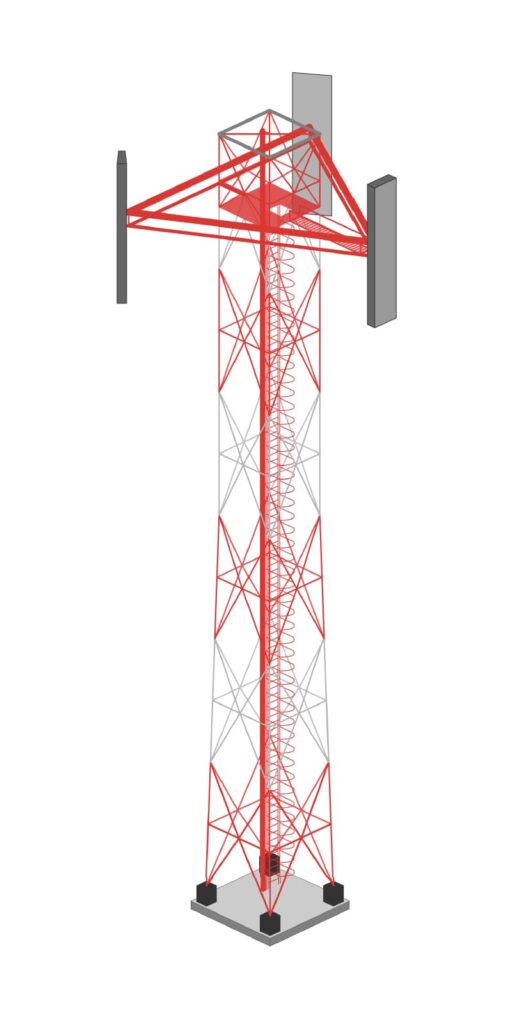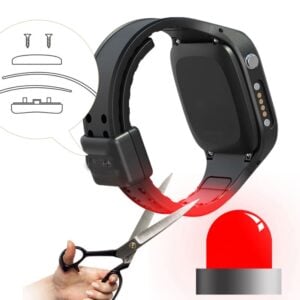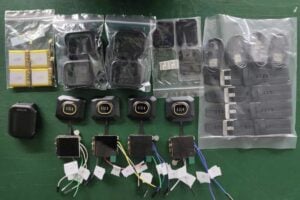Optimizing IoT Data Transmission with iSmarch LoRa/LoRaWAN Smartwatches
Table of Contents
Introduction to LoRa/LoRaWAN as a Data Transmission Method
In the evolving landscape of the Internet of Things (IoT), choosing the right data transmission method is crucial for the success of any project, particularly when integrating wearable technology. Among the various options available, LoRa (Long Range) and LoRaWAN (Long Range Wide Area Network) have emerged as game-changers, especially for projects where connectivity over extensive areas and power efficiency are key considerations.
Understanding LoRa and LoRaWAN:
LoRa is a spread spectrum modulation technique derived from chirp spread spectrum (CSS) technology. It offers a unique blend of long-range, low power consumption, and secure data transmission. LoRaWAN, the protocol or network technology built on top of LoRa, provides the communication protocol and system architecture for the network. It manages the communication between LoRa-enabled devices and the network server, ensuring efficient, reliable, and secure data transmission.
Why LoRa/LoRaWAN for Wearables:
Wearable technology, such as smartwatches, plays a critical role in various IoT applications, from health monitoring to location tracking. However, the efficiency of these wearables heavily depends on their ability to transmit data effectively over long distances while conserving battery life. LoRa/LoRaWAN stands out in this regard, offering several advantages:
- Extended Range: LoRa/LoRaWAN’s long-range capability makes it ideal for large-scale environments, from sprawling industrial sites to remote outdoor locations.
- Low Power Usage: The technology is designed for minimal energy consumption, extending the battery life of wearables, a crucial factor in their continuous usage.
- Secure and Reliable: LoRa/LoRaWAN ensures secure and reliable transmission of data, an essential aspect of handling sensitive information, such as personal health data.
As we delve deeper into the world of wearables and IoT, understanding the potential of LoRa/LoRaWAN becomes imperative. In the following sections, we will explore how iSmarch smartwatches harness the power of LoRa/LoRaWAN to offer superior connectivity solutions, especially in scenarios where other data transmission methods like CAT-M, NB-IoT, or 4G may not be as effective or feasible.
Eluating Data Transmission Methods: LoRa’s Edge Over 4G
In the context of wearable technology for IoT applications, the choice of data transmission method is not just about performance but also about practical applicability and security. While 4G offers widespread usage, it has limitations that LoRa and LoRaWAN address more effectively, particularly in remote areas and for data privacy.
Challenges with 4G Coverage and Applicability:
- Limited Remote Area Coverage: One of the significant limitations of 4G is its coverage, especially in remote or rural areas. These are often the locations where management of lone workers or tracking in extensive industrial sites is most needed. LoRa comes into play here with its long-range capabilities, making it a viable solution where 4G networks fail to reach.
- Data Privacy Concerns: LoRa and LoRaWAN offer a more private network solution. Unlike 4G networks that are widely accessible and more prone to security risks, LoRa networks can be configured to provide enhanced data security, making them ideal for sensitive applications where data privacy and security are paramount.
- Expensive operating cost for 4G: 4G smartwatches, while advantageous during the Proof of Concept stage, often face operational challenges in the long term. Issues such as inconsistent network performance, carrier restrictions, high SIM card costs, and recurring expenses make them less ideal for sustained use in IoT applications. Additionally, the complexities associated with software platforms and third-party recharge platforms can hinder user experience.
LoRa’s Advantages in IoT Wearables:
- Enhanced Connectivity in Challenging Environments: LoRa’s ability to provide connectivity in remote or challenging environments makes it particularly suitable for wearables used in industrial, agricultural, or field operations.
- Secure Data Transmission: With LoRa, the data transmission occurs within a more controlled and secure network, reducing the risk of data breaches and ensuring the integrity of transmitted information.
- Cost-Effective and Energy Efficient: LoRa networks avoid the high operational costs associated with 4G, especially in terms of ongoing data plans and SIM card management. Additionally, LoRa’s low power consumption extends the battery life of wearables, which is crucial for continuous monitoring and operations.
Strategic Recommendations for LoRa Implementation:
- Remote Operations and Lone Worker Management: For industries that operate in remote locations or require lone worker management, LoRa-equipped smartwatches like the iSmarch J3 offer a reliable and efficient solution.
- Industries Requiring Data Privacy: Sectors such as healthcare, security, and corporate environments, where data privacy is a significant concern, can benefit greatly from the secure network that LoRa provides.
- For projects where power efficiency and reliable connectivity are paramount, we recommend our BLE or LoRa series products. These are especially beneficial in sectors like healthcare, where precise PPG data and vital sign metrics are essential.
In light of these insights, while 4G has its place in the broader spectrum of connectivity options, LoRa and LoRaWAN emerge as more advantageous for specific IoT applications, particularly those requiring extensive coverage in remote areas and heightened data security. iSmarch’s strategy, therefore, leans towards recommending LoRa for customers seeking long-term, efficient, and secure wearable solutions.
Comparing Data Transmission Methods in Wearables
Here’s a closer look at various transmission methods and why we often recommend BLE or LoRa over CAT-M, NB-IoT, and 4G.
| Feature/Method | LoRa/LoRaWAN | BLE | CAT-M/NB-IoT | 4G |
|---|---|---|---|---|
| Coverage | Excellent in remote areas | Short-range | Good, better in urban areas | Widespread but not in remote areas |
| Power Consumption | Very low | Low | Moderate | High |
| Data Security | High, private network | Moderate, private network | Moderate | Standard cellular network security |
| Connectivity | Stable in challenging terrains | Stable for short distances | Stable, varies with carrier | Can be inconsistent |
| Cost-Effectiveness | High, low operational costs | High, minimal costs | Moderate | Low, recurring data costs |
| Ideal Applications | Remote operations, industrial safety, agriculture | Close-range communication, indoor tracking | Urban IoT applications, smart metering | Urban areas, applications requiring high data rates |
| Data Rate | Low to moderate | Moderate to high | Low to moderate | High |

Key Insights:
- LoRa/LoRaWAN: Best for applications requiring long-range connectivity in remote or challenging environments. Offers significant benefits in power efficiency and data security, making it ideal for sectors like healthcare and industrial operations.
- BLE (Bluetooth Low Energy): Most effective for short-range communication, such as indoor tracking and close-range device interaction. It’s energy-efficient and cost-effective.
- Advantages of BLE and LoRa in Wearables:
- Energy Efficiency: Both BLE and LoRa technologies are known for their low power consumption, making them more suitable for wearables that require long battery life.
- Reliable Connectivity: Unlike 4G, BLE and LoRa offer more stable and reliable connectivity, especially in extensive and remote environments.
- Reduced Costs: These technologies circumvent the high costs associated with cellular networks, providing a more cost-effective solution for data transmission.
- Flexibility: BLE and LoRa adapt more easily to various environmental conditions and operational requirements.
- CAT-M/NB-IoT: Suitable for IoT applications in urban settings where cellular coverage is robust. It’s a middle ground between BLE and traditional cellular options like 4G.
- Understanding CATM vs. CAT1: While CAT1 has been a traditional choice for IoT devices requiring cellular connectivity, CATM (or LTE-M) is optimized for a broader range of IoT needs. It offers benefits like extended coverage and better battery life, which are crucial for devices in challenging environments. However, the high-power consumption associated with cellular connectivity remains a concern. In scenarios where cellular connectivity is still required, CATM or NB-IoT smartwatches can be considered as alternatives to 4G, offering better efficiency and tailored features for industrial applications.
- 4G: While offering high data rates and widespread coverage, it is not ideal for remote areas. It also incurs higher operational costs and has higher power consumption, which can be a drawback for wearables.
iSmarch LoRa/LoRaWAN Smartwatches: Revolutionizing IoT Connectivity and Data Transmission
LoRa/LoRaWAN's Unique Advantages in Certain Environments
Targeting Specific Environments:
The choice of LoRa/LoRaWAN for iSmarch smartwatches is not arbitrary. These technologies are particularly suited to environments where traditional data transmission methods face limitations.
- Remote and Extensive Areas: LoRa excels in remote or rural locations where cellular networks like 4G are sparse or nonexistent. Its ability to transmit data over long distances without requiring extensive power makes it ideal for managing operations in vast agricultural lands, geological survey sites, and large industrial complexes.
- Data Privacy and Security: In applications where data security is paramount, such as healthcare monitoring or corporate data handling, LoRa/LoRaWAN offers a more private and secure network. Unlike widely accessible 4G networks, LoRa networks can be configured for enhanced security, providing peace of mind when handling sensitive information.
- Reduced Operational Costs: The cost-effectiveness of LoRa/LoRaWAN is a significant advantage. By eliminating the high recurring costs associated with cellular data plans and SIM card management, LoRa networks offer a more sustainable solution for long-term IoT projects.
iSmarch Smartwatches in LoRa Environments:
The iSmarch J3 smartwatches are designed to harness these advantages, making them a robust solution for industries operating in challenging environments. Their integration with LoRa/LoRaWAN ensures reliable communication, essential for applications like lone worker safety in remote areas, real-time data monitoring in agriculture, and extensive asset tracking in industrial settings.
The Superiority for IoT Applications:
- LoRa/LoRaWAN technologies align perfectly with the IoT’s foundational requirements – connectivity over vast areas, minimal power usage, and secure data transmission.
- For projects where these factors are critical, such as environmental monitoring or infrastructure management, iSmarch’s LoRa-enabled smartwatches offer an optimal solution.
In conclusion, the selection of LoRa/LoRaWAN for data transmission in iSmarch smartwatches is guided by their unparalleled performance in specific environments where traditional methods fall short. Their capability to provide long-range, low-power, and secure data transmission aligns with the diverse needs of modern IoT applications, especially in sectors where these attributes are non-negotiable.
Application Scenarios Demonstrating LoRa/LoRaWAN's Effectiveness
LoRa/LoRaWAN technology, particularly when integrated into wearable devices like iSmarch smartwatches, opens up a myriad of possibilities across various industries. The technology’s unique attributes make it ideally suited for specific scenarios:
Large Campuses - Education and Corporate
- Scenario: On large educational or corporate campuses, keeping track of personnel and ensuring their safety can be challenging.
- LoRa Benefit: LoRa-enabled iSmarch smartwatches provide a reliable solution for real-time location tracking and emergency communication across expansive areas, far surpassing the limitations of conventional Wi-Fi or Bluetooth networks.
Remote Field Operations - Geology, Agriculture, Environmental Monitoring
- Scenario: Operations in remote areas such as geological surveys, agricultural management, or environmental monitoring often lack reliable cellular network coverage.
- LoRa Benefit: The long-range connectivity and low power consumption of LoRa make iSmarch smartwatches an optimal choice for these scenarios, enabling continuous monitoring and data collection in even the most isolated locations.
Industrial Facilities - Safety and Operational Efficiency
- Scenario: In extensive industrial settings, ensuring worker safety and operational efficiency is paramount, especially in areas where traditional communication networks have limited reach.
- LoRa Benefit: iSmarch smartwatches equipped with LoRa technology facilitate seamless communication and tracking of workers, enhancing safety protocols and operational coordination in such challenging environments.
The Synergy of Mixed Solutions: BLE Gateway + LoRa Gateway

In the quest for optimal data transmission in IoT applications, a mixed-solution approach combining Bluetooth (BLE) Gateways with LoRa Gateways offers a compelling synergy. This combination leverages the strengths of both technologies, providing enhanced efficiency and coverage.
Benefits of BLE and LoRa Gateway Integration:
Extended Coverage and Efficiency
BLE is ideal for short-range communication within confined spaces like buildings or complexes, while LoRa excels in long-range transmission over extensive, open areas. Integrating both ensures comprehensive coverage, addressing connectivity needs in varied environments.
Adaptive Data Transmission
For operations that span both indoor and outdoor settings, this mixed solution allows seamless transition between BLE for indoor precision and LoRa for outdoor range, ensuring continuous data flow.
Energy Efficiency
BLE’s low energy requirement complements LoRa’s long-range, low-power capabilities, resulting in an overall energy-efficient system.
Case Examples
Industrial Scenario
In a manufacturing plant, BLE is used for precise tracking and communication within the facility, while LoRa facilitates broader site management and external communication.
Healthcare Application
Hospitals utilize BLE for indoor patient monitoring and staff coordination, while LoRa ensures connectivity for outdoor areas like parking lots and auxiliary buildings.
iSmarch Smartwatches: Optimized for LoRa/LoRaWAN
iSmarch Smartwatches are meticulously designed to harness the strengths of LoRa/LoRaWAN technology, making them a perfect fit for a wide range of IoT applications that require reliable and efficient data transmission.
Enhanced Outdoor Positioning
iSmarch smartwatches utilize LoRa/LoRaWAN’s long-range capabilities to offer accurate and dependable outdoor positioning. This feature is particularly beneficial for applications like remote worker safety, large-scale event management, and extensive agricultural operations.
Reliable Data Transmission
The integration of LoRa/LoRaWAN in iSmarch smartwatches ensures a stable and secure data transmission pathway, critical for applications where data integrity and timely delivery are paramount.
The smartwatches are optimized for scenarios that demand robust connectivity, overcoming the limitations of traditional cellular networks in remote or challenging environments.
iSmarch’s Technological Edge
By embracing the combined power of BLE and LoRa technologies, iSmarch smartwatches stand out in the market. They offer a versatile solution adaptable to varying operational needs, from indoor personnel tracking to expansive outdoor data collection.
In conclusion, iSmarch smartwatches represent an innovative fusion of technology and practicality. Optimized for LoRa/LoRaWAN, they provide a versatile and efficient solution for diverse IoT applications, ensuring high performance in both indoor and outdoor environments.
Technical Integration Guidance for iSmarch Smartwatches with LoRa/LoRaWAN
Integrating iSmarch smartwatches into existing LoRa/LoRaWAN networks is a process designed for simplicity and flexibility, accommodating various project demands and technical landscapes. iSmarch offers comprehensive support and resources to facilitate this integration, ensuring that clients can fully leverage the capabilities of their smartwatches in diverse environments.
Step-by-Step Integration Process:
- Network Compatibility Assessment: Initially, an evaluation is conducted to understand the specific requirements of the client’s existing LoRa/LoRaWAN network. This helps in identifying any necessary adjustments or compatibility considerations.
- Custom Protocol Configuration: iSmarch smartwatches are designed to be adaptable. The configuration process includes customizing the data transmission protocols to align with the client’s network standards, ensuring seamless communication between the smartwatches and the LoRa gateways.
- Technical Documentation and Support: Clients are provided with detailed technical documentation, including guides on network access, uplink and downlink protocols, and GPS data conversion. This documentation serves as a resource for understanding the technical aspects of integrating the smartwatches into their systems.
Contact us
Interested in our Lora and LoraWan smartwatches? Excited about tailor-made solutions for your needs? Reach out to us now!


